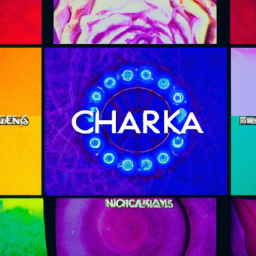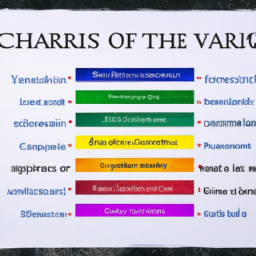?
Chakras, also known as energy centres, play a significant role in both Hinduism and Buddhism. In Buddhism, chakras are considered to be a part of the subtle body – a body which exists beyond our physical form. They are believed to be energetic nodes that are responsible for the flow of energy or life force within us.
The concept of chakras originated in India and was later adopted by various spiritual practices, including Buddhism. But what exactly are chakras and why are they important in Buddhism?
The Concept of Chakras
In Sanskrit, chakra means “wheel” or “circle”, symbolizing the continuous flow of energy. According to the teachings of Buddhism, there are seven main chakras located along the spine, from the base to the crown of the head. Each of these chakras has its unique function, associated with a specific element and color.
The Seven Main Chakras
-
Root Chakra (Muladhara)
Located at the base of the spine, the root chakra is associated with the element of earth and the color red. It represents the basic human needs for survival, such as food, shelter, and safety. When this chakra is balanced, we feel grounded and stable.
-
Sacral Chakra (Svadhishthana)
The sacral chakra is located just below the navel and is associated with the element of water and the color orange. It governs our emotions, creativity, and sensuality. A balanced sacral chakra helps us to express ourselves freely and experience pleasure.
-
Solar Plexus Chakra (Manipura)
The solar plexus chakra is located above the navel and is associated with the element of fire and the color yellow. It is the seat of our personal power, self-esteem, and confidence. When this chakra is balanced, we have a strong sense of self and are able to achieve our goals.
-
Heart Chakra (Anahata)
The heart chakra is located at the center of the chest and is associated with the element of air and the color green. It represents love, compassion, and connection with others. A balanced heart chakra allows us to give and receive love freely.
-
Throat Chakra (Vishuddha)
The throat chakra is located at the base of the throat and is associated with the element of sound and the color blue. It governs our ability to communicate and express ourselves. A balanced throat chakra allows us to speak our truth with clarity and confidence.
-
Third Eye Chakra (Ajna)
The third eye chakra is located in the center of the forehead, between the eyebrows, and is associated with the element of light and the color indigo. It represents intuition, wisdom, and inner vision. A balanced third eye chakra allows us to see beyond the physical and tap into our inner guidance.
-
Crown Chakra (Sahasrara)
The crown chakra is located at the top of the head and is associated with the element of consciousness and the color purple. It represents our connection to the divine, spiritual enlightenment, and oneness with all. A balanced crown chakra allows us to experience a higher state of consciousness.
Importance of Chakras in Buddhism
In Buddhism, chakras are considered to be key to achieving self-awareness and spiritual growth. They help us understand the complex interplay of thoughts, emotions, and energy within us. By balancing and aligning our chakras, we can clear our energy pathways and achieve a state of peace and contentment.
Moreover, chakras play an important role in various meditation practices, as each chakra is associated with a specific mantra and meditation technique. By activating and balancing our chakras, we can deepen our meditation practice and reach a higher level of consciousness.
Conclusion
In conclusion, chakras are energy centres that hold great significance in Buddhism. They represent our connection to the divine and play a crucial role in our physical, emotional, and spiritual well-being. By understanding and working with our chakras, we can achieve inner peace and harmony, and ultimately, enlightenment.





Interesting question!
SoozieQ: This sounds fascinating!
Great question! It sounds like a deep topic that could provide a lot of insight into understanding Buddhism. #learningmore
It’s definitely worth exploring!